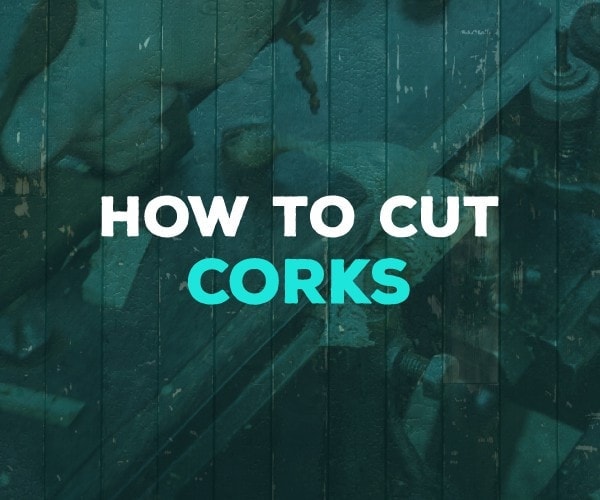There are a lot of fun DIY projects that utilize old wine corks.
Not only do they create an interesting, unique, and functional finished product, but they’re also a great way to use up any old corks you have lying around.
Yet sometimes a wine cork just won’t work in its standard condition. Instead, the specifics of the project require that you cut it into a different size or shape.
Though it might seem a little difficult at first glance, it’s actually very easy to cut a wine cork with just a few simple tools.
Here is how to cut corks the easiest way.
What You’ll Need
You have multiple options when it comes to cutting corks.
These range from using a simple utility knife to a hacksaw to building your own cutting device.
Because I’m all about taking the simplest and easiest route as long as it produces equal results, I’m going to focus on the method that utilizes the least amount of tools here.
Here’s what you’ll need:
- Utility Knife
- Measuring Tape
- Carpenter’s Pencil
- Pot with Lid
- Steamer Basket
Though it’s possible to cut a cork in half lengthwise or widthwise with these simple tools, it’s a little bit easier when you also use:
- Woodworking Clamps
- Work Table
The woodworking clamps and work table give you a solid workplace that will prevent the cork from rolling around while you’re cutting it.
Step I: Prepare Corks
The first step of this project is the most important.
It’s essential to properly prepare the corks before diving into the actual cutting.
The preparation I recommend involves boiling water with a pot on your stove and then steaming the corks much like you’d steam vegetables.
Steaming the corks like this before you start cutting makes them softer and will help prevent them from crumbling.
I typically steam my corks for roughly 10 minutes before moving onto the next step.
Step II: Cut Lengthwise
If you don’t need to cut your corks lengthwise and only need to cut them in half, move on to Step III below.
Those looking to cut their corks lengthwise, however, must take the time to build a sturdy work area to prevent the corks from rolling around.
I do this by using two woodworking clamps to hold the cork firmly to my work table.
Of course, this technique can get in the way of your cut. To hold the corks in place, the clamps must be overlapping the cork.
That’s why some experts, including Bangor Cork, recommend building a simple contraption out of two 12-inch long by 1-inch wide pieces of wood or glued to a work surface approximately a cork’s width apart.
You can then set the corks in the middle of these two pieces of wood and cut them lengthwise without any chance of them rolling or shifting.
Step III: Cut in Half
It’s a lot easier to cut a cork in half than it is to cut a cork lengthwise.
The reason is that you have much more room to grasp the cork to prevent it from rolling during the cut.
Of course, you can still use the clamps to hold the cork down more firmly. Although this isn’t 100% necessary, it can help ensure a straighter and flatter cut.
Either way, you'll just need to secure the cork and make the cut with your handy utility knife.
Stay Safe
Cutting a cork is far from the most dangerous DIY project you can take on.
That said, it’s still very important to treat the project properly and keep your safety in mind.
The first step to safely cutting a cork is allowing for adequate preparation time. As mentioned above, I recommend steaming your corks with boiling water for at least 10 minutes before cutting them.
As far as safety gear goes, there’s not much danger to your ears or eyes when using a utility knife to cut cork.
If you’re not very familiar with how to use a utility knife, then it might be a good idea to wear a pair of sturdy work gloves to prevent nicks to your hands.
Among the most important tips to keep in mind are to always cut away from your body, work on a stable surface, and use a utility knife with a sharp blade.
Final Thoughts
There’s not much to learning how to cut corks with a utility knife.
It’s a skill that’s useful for many DIY projects. Anyone can learn how to do it with just simple knowledge of using a utility knife.
And if you don’t have a utility knife, you can also learn how to cut corks with a hacksaw or similar cutting tool. The options are endless.
Now that you’re done with this thorough guide to cutting corks, here’s some of our other favorite DIY projects for you to try at home.

